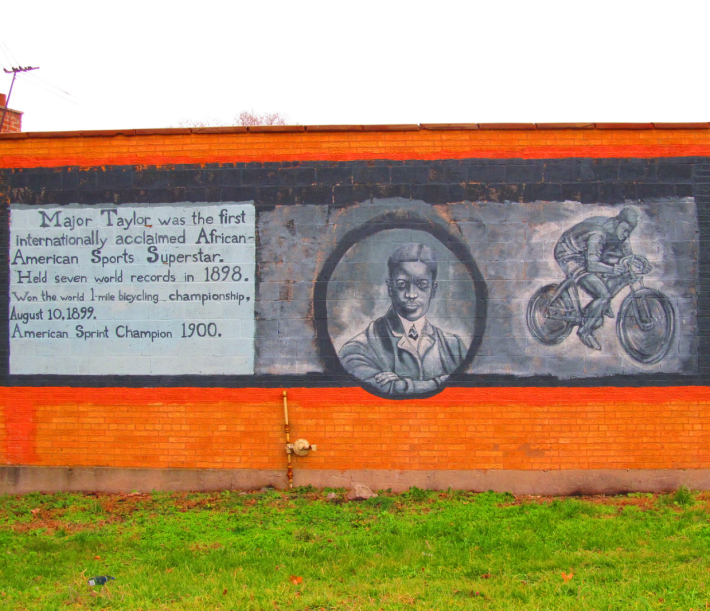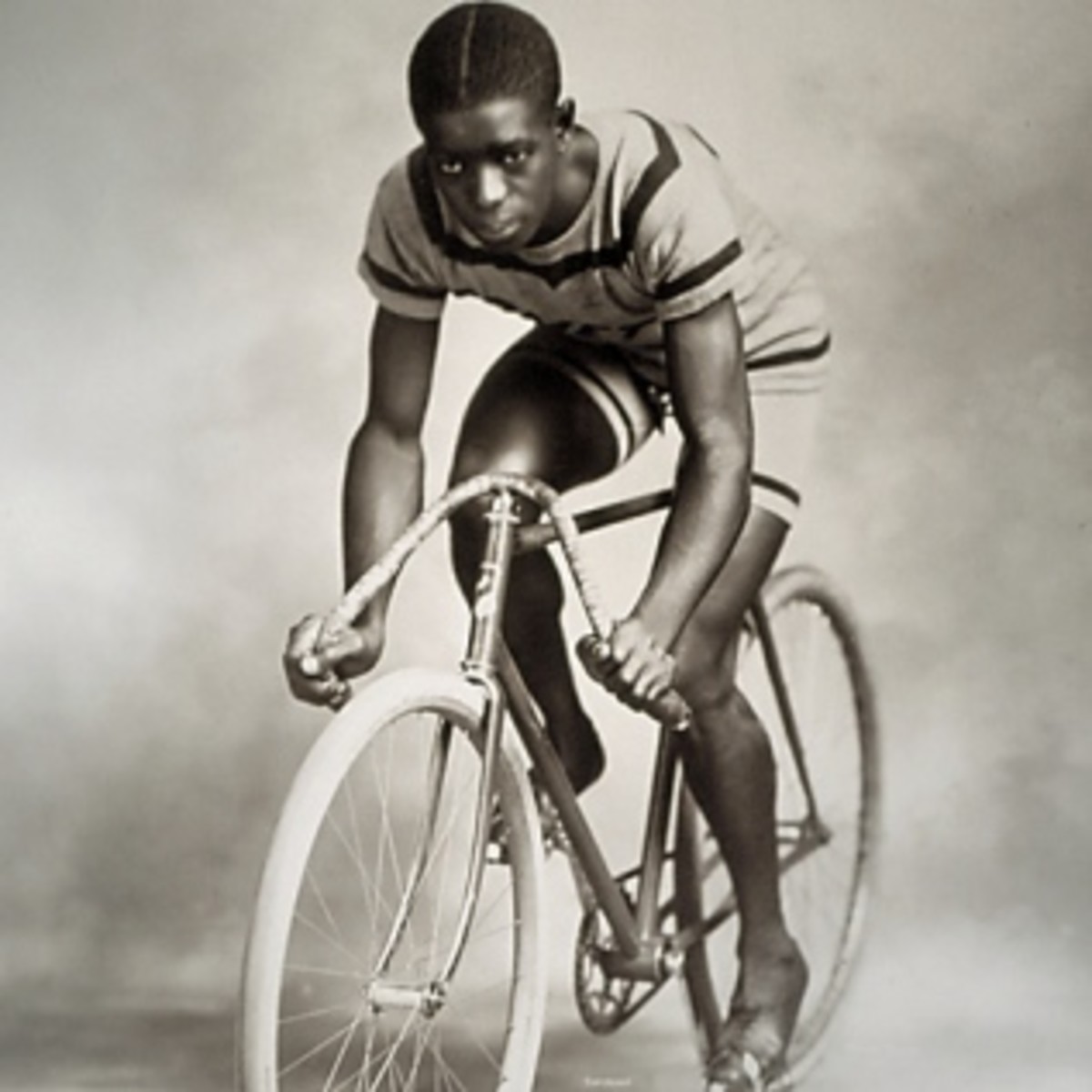In addition to the Bronzeville Trail Task Force's work converting the Stock Yard Line rail corridor into an elevated walking, running, and biking path, the group has also started work on honoring the memory of turn-of-the-century Black bike racing legend Marshall "Major" Taylor.
"Just a few months ago, the board passed a resolution to honor major Taylor and that resolution has three pillars to it," said John Adams, founder of the Bronzeville Trail Task Force, at a press event conference on Tuesday. The first pillar is a "gorgeous monument dedicated to his honor" on the western end of the proposed Bronzeville Trail. The second pillar is to get Major Taylor onto a postage stamp. The third pillar is for Major Taylor to be posthumously awarded a Congressional Gold Medal. In order to make the last one a reality, the group started an online petition that has garnered almost 700 signatures as Thursday morning.
The press conference was held at Bronzeville's Wabash Avenue YMCA. Not only is the location a Chicago Landmark, but it was also Major Taylor's final residence before his death at Cook County Hospital in 1932.
"It's also fitting that we're here at the Wabash YMCA, one of the most important buildings in American history," said state representative and Chicago mayoral candidate Kam Buckner at the presser. "[This is] literally the place where Black History Month was born. We have always made history in this place and we are poised today to do it again. So I stand here in support of all we will do to recognize the great American Major Taylor."

Taylor had moved to Chicago two years prior to his death in order to sell his autobiography, and what a story it was. Born in 1878 in Indianapolis, his nickname Major was in reference to his early job performing bicycle stunts while wearing an army jacket outside a local bike shop. He became the first Black athlete to compete in non-segregated competitions, breaking seven world records by the end of 1898.
"I asked my father who was Major Taylor, and that was a normal question for a curious kid like me," Buckner said. "Asking about people who do things or whom places were named after. But my father's response was different than when I would ask him who was Dan Ryan or who was Halsted or who was Ashland or who Cook County is named after. My dad lit up with pride, telling me the story of Major Taylor and what he meant."
On August 10, 1899, Taylor became the second Black man to win a world championship in any sport during the world one-mile championship in Montreal. He also became the U.S. sprint champion in 1990, beating every European champion while racing in both Australia and New Zealand. He achieved these things despite fighting constant headwinds of racial discrimination. He was added to the U.S. Bicycling Hall of Fame in 1989.
"When we educate people on who he is, they step back and they say I hate that we didn't know who he is," said Bill Gaston, president of the MT International Cycling Alliance. "The effort that the Bronzeville Task Force is putting forth should bring more knowledge to who Major Taylor is. I didn't know who he was until 2017 and I'm just one of many people that have never heard his name because he is lost in the history books."

President Theodore "Teddy" Roosevelt was a big fan of Taylor. However, the same could not be said of everybody. Some track owners barred him from competing at their venues, white cycling clubs like the League of American Wheelmen banned him, and white spectators heckling him. Taylor also received death threats
"Major Taylor was more than just the Jackie Robinson of cycling," said Buckner. "He not only carried the weight of tremendous racism and prejudice, but he represented greatness and dignity around the world during the golden age of cycling. And at one point he became the most recognizable African-American person in America. He not only faced oppression of being an other in a [segregated] sport, but he risked his own personal safety to do so."
At one point, Taylor was one of the wealthiest athletes of his time. However, a combination of failed business ventures and medical bills led to him dying penniless. After dying of a heart attack in 1932 at age 53, Taylor was initially buried in an unmarked grave Mount Glenwood Cemetery in south-suburban Glenwood. Sixteen years later, a group of professional bike racers used money donated by the owner of Schwinn bicycles to have his body relocated to a more prominent spot in the cemetery with a a headstone reading: "World's champion bicycle racer who came up the hard way without hatred in his heart, an honest, courageous and God-fearing, clean-living gentlemanly athlete. A credit to his race who always gave out his best. Gone but not forgotten."
Now, 91 years after Taylor's death, the first person to sign the petition for him to receive a Congressional Gold Medal was Taylor's great-granddaughter Karen Donovan, who spoke at the press conference. "I am very happy to be here along with my mother at an event such as this one that seeks to pay tribute to my great-grandfather."
Sign the petition for a Congressional Gold Medal for Major Taylor here.





